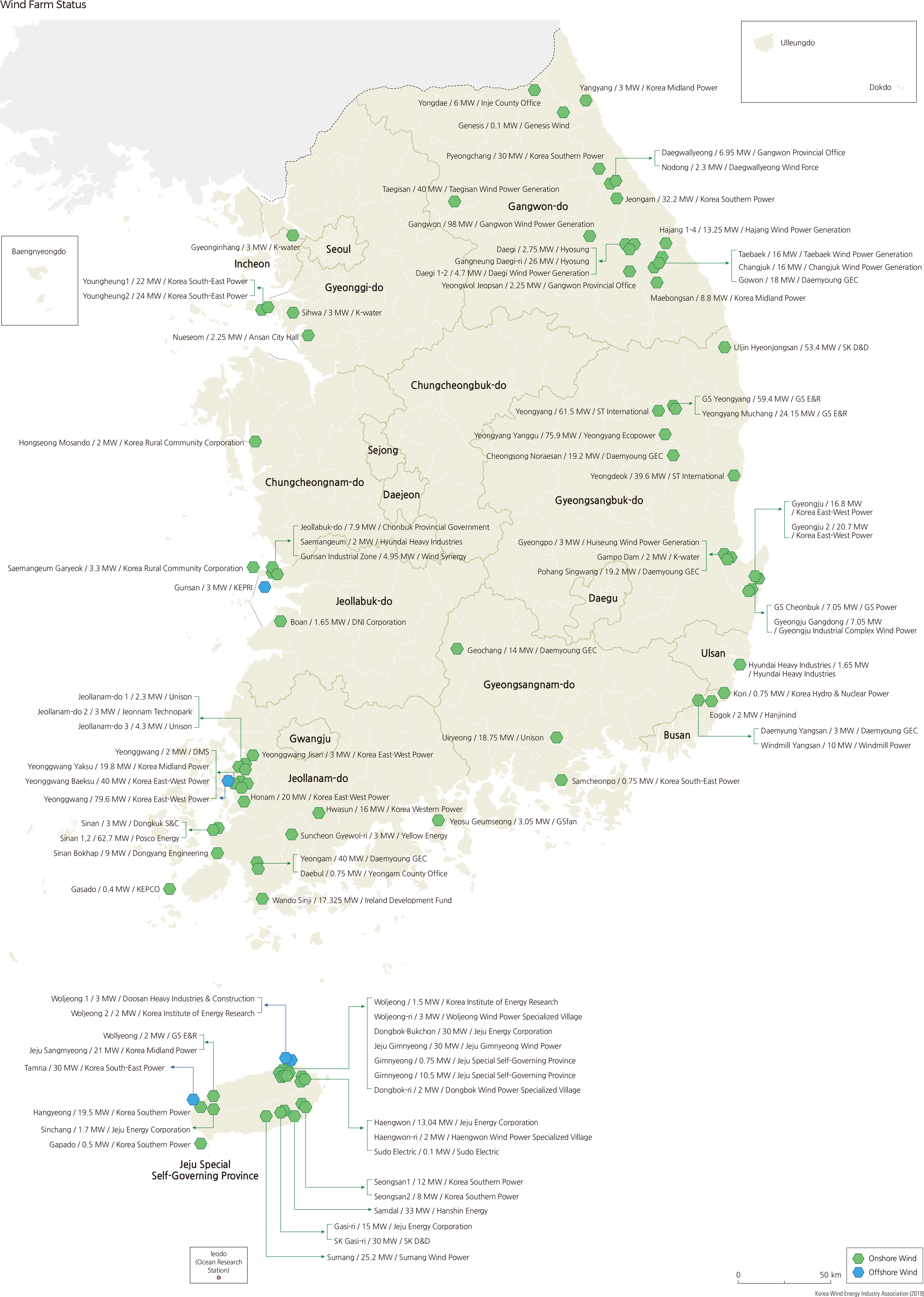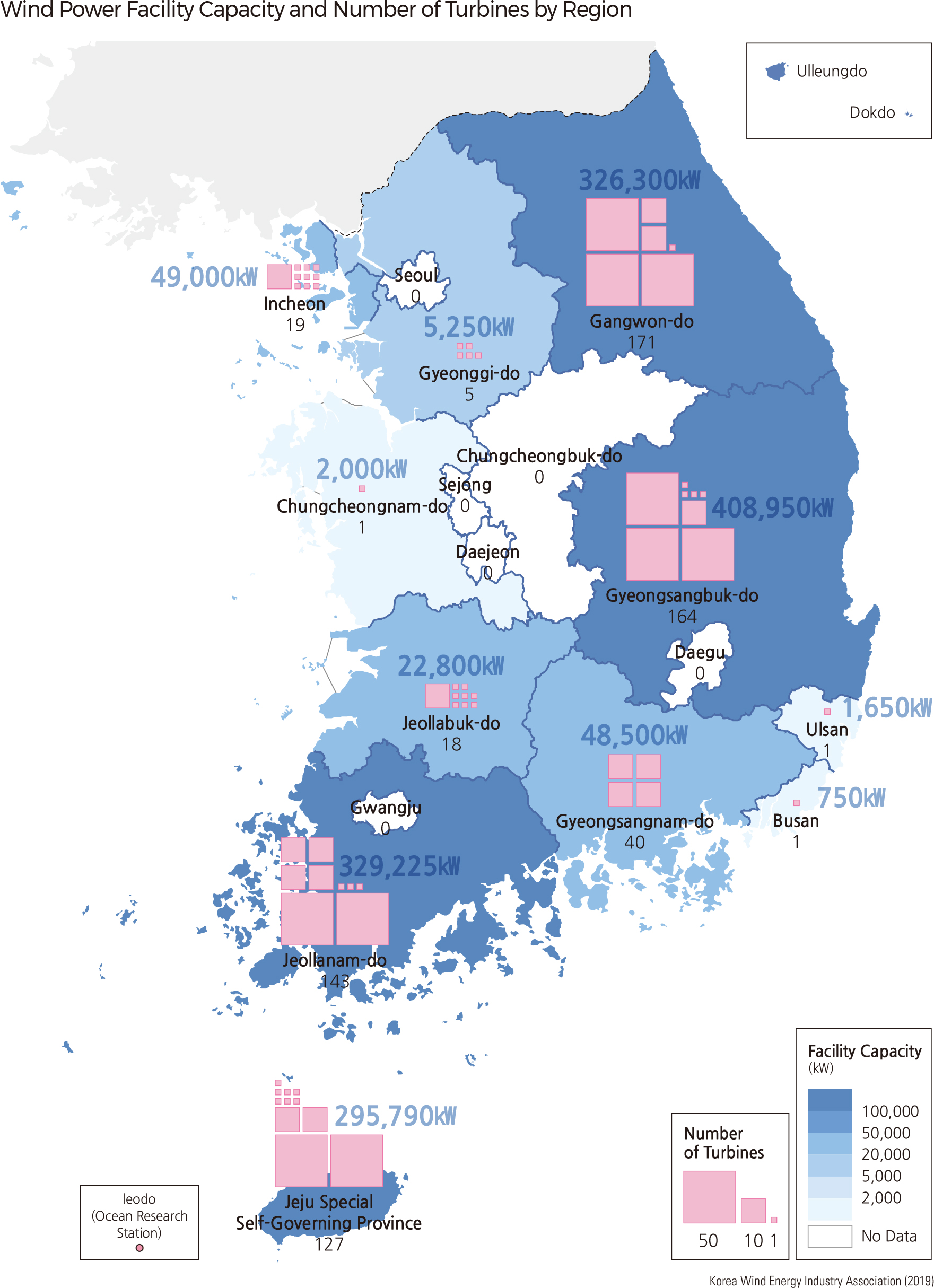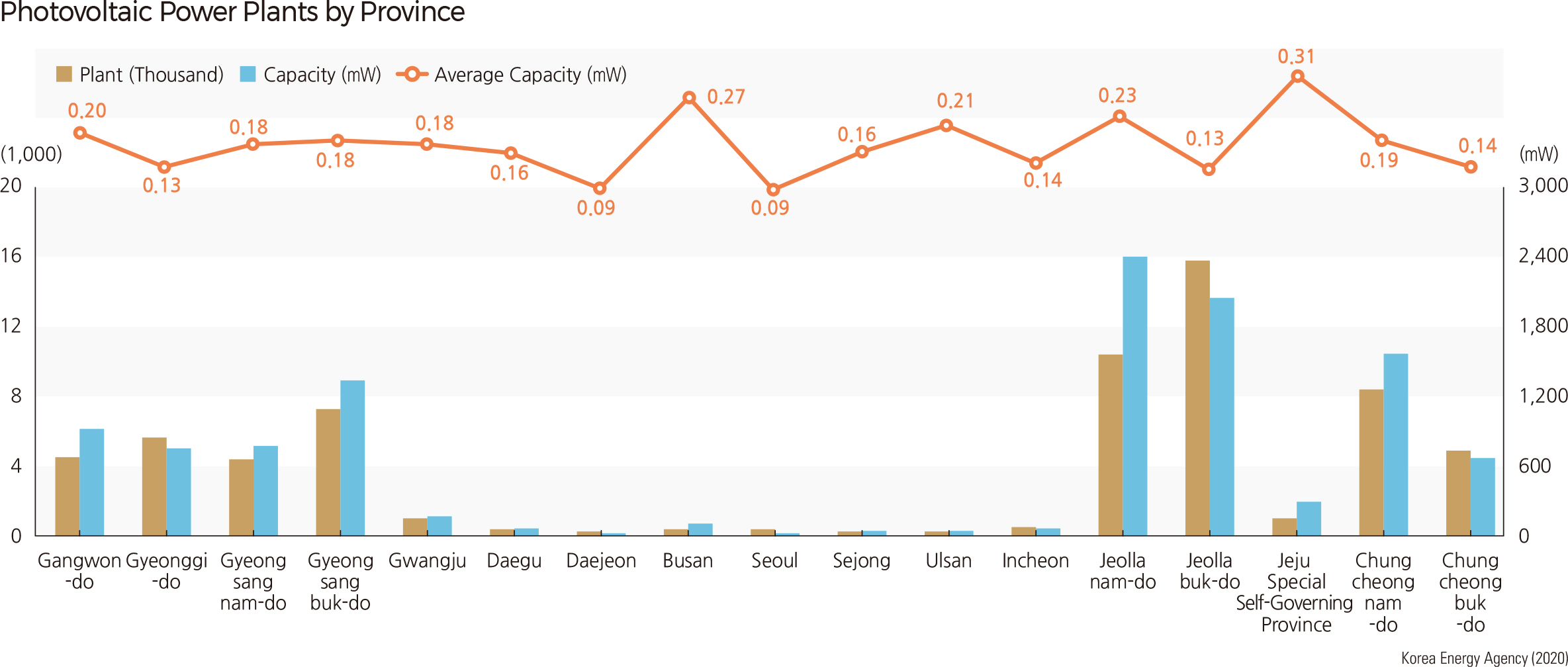English II 2020
As of 2019, there are 690 wind turbines in 103 complexes in South Korea. The total capacity of power generation supplies about 1,490.2 megawatts (mW). Wind farms are mainly distributed in the Taebaek Mountains in Gangwon-do, Nakdongjeongmaek in Gyeongsangbuk-do (Yeongyang-Cheongsong-gun), coastal areas in Pohang and Ulsan, and the southwestern coastal area of Jeollanam-do, and Jeju-do. There are relatively few wind farms in Gyeonggi-do, Chungcheongnam-do, and Chungchongbuk-do, which is due to differences in wind direction by region. Considering the wind direction, Taebaeksanmaek and Nakdongjeongmaek are suitable for inland wind power generation and the Southwest Coast and Jeju Island are suitable for coastal and maritime wind power generation.
However, wind power can be polarizing, as evidenced by conflicts between residents or debates about the possible environmental damage during the installation process of a wind farm. The wind farm projects at Yeongyang and Cheongsong-gun are examples of this societal impact. A majority of the wind power facilities are not operated by residents. The wind power facility on Jeju Island is the only project that residents participated in.
Although wind farms are expected to increase significantly in the future according to the renewable energy expansion plan, there are no government or local governments' countermeasures to alleviate the controversy over residents' opposition and environmental damage. The proposed "Renewable Energy 2030 Implementation Plan" is delayed. In order to successfully expand wind power generation, it is necessary to prepare a support system that can help with the operation of wind farms while addressing the interests of local residents and minimizing conflict.
The electricity produced by domestic photovoltaic power plants amounts to a total of 11.3 gigawatts (11,377.9 mW). During the same period, wind power generation capacity was 1.4 gigawatts. When comparing the two capacities, from the standpoint of the current government, solar power generation is more effective and important. In general, large-scale wind power plants can produce more electricity than solar power plants, but wind power generation sites have requirements that limit where they can be established, and the initial investment cost is higher. By contrast, solar power generation can be more extensive because there are more potential site options. The generation capacity of solar power by province is, in the order of capacity, Jeollanam-do (2,402.9 mW), Jeollabukdo (2,052.9 mW), Chungcheongnam-do (1571.8 mW), and Gyeongsangbuk-do (1348.5 mW). However, the number of power plants in Jeollabuk-do was 15,758, ahead of Jeollanam-do (10,345), though the size of the solar power plants in Jeollanam-do is larger on average.
Chungcheongnam-do has the third-largest solar power generating capacity among local governments at 1571.8 mW, while Gyeongsangbuk-do has the fourth-largest at 1,348.5 mW. Local governments (Jeollanam-do, Jeollabuk-do, and Chungcheongnam-do) with a large capacity for solar power generation have the generators installed in flat places where the altitude is not high compared to other regions. In particular, Jeollanam-do and Jeollabuk-do had relatively low land prices compared to other regions, making it relatively easy to install facilities for solar power generation.
Local governments with a power generation capacity of less than 1,000 mW are Gangwon-do (914.2 mW), Gyeongsangnam-do (774.1 mW), Gyeonggi-do (748.3 mW), and Chungcheongbuk-do (668.5 mW). The number of power plants is 4,586 in Gangwon-do, 4,355 in Gyeongsangnam-do, 5,612 in Gyeonggi-do, and 4,935 in Chungcheongbuk-do. Jeollanam-do and Jeollabuk-do have many fewer by comparison. Meanwhile, the average local government power-generating capacity by power plants is highest in Jeju, where 982 power plants generate about 303.7 mW of electricity.
In the future, solar power generation facilities in the form of power generation complexes are planned to be built mainly in places with low salinity production, such as salt-affected reclaimed land. Jeollanam-do, Jeollabuk-do, and Chungcheongnam-do have many reclaimed land areas on which to build a large-scale solar power generation complex.
As with the developments of wind farms, local residents may object when developing a solar power plant. With the rapid increase in the number of solar power generation facilities in mountain regions by 2018, environmental disturbances and landscape deterioration have also emerged as serious social problems. The government reinforced the standards for solar power generation in the mountains by establishing the "Environmental Review Guide for Onshore Solar Power Generation" (Ministry of Environment, 2018). Since then, the number of solar power construction sites in the mountains has declined. In the future, it seems important to find new ways to reduce environmental damage—for example, the installation of photovoltaic sites in agricultural and urban areas. |



